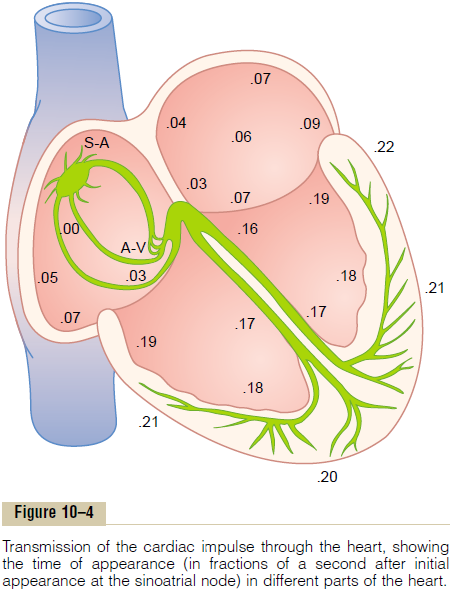Chapter: Medical Physiology: Rhythmical Excitation of the Heart
Role of the Purkinje System in Causing Synchronous Contraction of the Ventricular Muscle
Role of the Purkinje System in Causing Synchronous Contraction of the Ventricular Muscle
It is clear from our description of the Purkinje system that normally the cardiac impulse arrives at almost all portions of the ventricles within a narrow span of time, exciting the first ventricular muscle fiber only 0.03 to0.06 second ahead of excitation of the last ventricularmuscle fiber. This causes all portions of the ventricular muscle in both ventricles to begin contracting at almost the same time and then to continue contract-ing for about another 0.3 second.
Effective pumping by the two ventricular chambers requires this synchronous type of contraction. If the cardiac impulse should travel through the ventricles slowly, much of the ventricular mass would contract before contraction of the remainder, in which case the overall pumping effect would be greatly depressed. Indeed, in some types of cardiac debilities, slow trans-mission does occur, and the pumping effectiveness of the ventricles is decreased as much as 20 to 30 per cent.


Related Topics